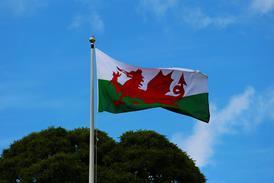Clwyd Pension Fund has allocated 2 per cent of its assets to timberland and agriculture, attracted by the chance to earn higher returns and hedge against a rise in inflation.
The scheme has allocated a further £10m to two direct operational agriculture funds and £4.4m to timber since 2011, according to the scheme’s 2013 annual report.
There was logic around some sort of inflation hedge – we expect some sort of global inflation link there
Philip Latham, Clwyd
This is part of its 15 per cent real asset portfolio, which also includes allocations to property, infrastructure and commodities.
The £1.2bn scheme is one of only a handful in the UK to invest in timber and agriculture, as many schemes have been deterred by the illiquidity and lack of investor familiarity surrounding the asset classes.
For the full The Specialist report on property and real assets, click here for the PDF.
Clwyd Pension Fund made an initial investment of £9.5m in timberland in 2007, according to it’s most recent annual report.
“There was logic around some sort of inflation hedge – we expect some sort of global inflation link there,” says Phillip Latham, manager at the scheme. “There was probably an environmental factor as well if it’s well-managed forestry or agriculture.”
“That’s just not the case for agriculture and timber,” he says. “You are exposed to market fluctuations, so while over the long term there may be some correlation with inflation, it’s not as strong as infrastructure.”
Examining returns
Since most of the timber and agriculture funds invested in are euro-denominated and many of the underlying investments are dollar-denominated, it can be difficult to drill down to examine returns, says Latham.
“The difficulty [in] measuring returns is around currency,” he says. The scheme hopes to make 8 to 10 per cent annualised returns over the investments’ 10-year lifetime.
“At the moment they’re lower than expected, but you have to keep in mind we’re investing in vehicles that are similar to private equity,” he says.
The scheme’s investments in timberland and agriculture returned around 7 per cent in the 12 months to March 31 2013, according to the annual report.
Most of this return will be attributed to timber investments, says Latham, adding that some of its allocation is still at the investment stage.
Although the allocation to real assets has been set at 15 per cent, there is room to increase this, Latham says. He adds the scheme was also drawn to making the investment by the types of returns that could be generated.
Locking up capital
Illiquid assets can be more problematic for private sector defined benefit schemes, many of which are closed or closing to new members and thinking about derisking, says John MacDonald, head of alternatives research at consultancy Hymans Robertson. “In the past year or two, local authority schemes have had a lot more on their plates and a lot more to worry about than looking at new types of assets,” he says.
For the full The Specialist report on property and real assets, click here for the PDF.
However, MacDonald is not convinced investing in these asset classes does provide a sufficient inflation hedge in the same way as infrastructure, since the latter tends to be regulated and has a genuine global linkage to inflation.
Timberland and agriculture investments historically have a relatively attractive risk/return profile and low correlation with a number of other asset classes, says Alex Koriath, head of manager research in KPMG’s investment advisory practice.
However, the private equity-like partnership structures through which these assets are usually accessed come with a range of disadvantages for investors, he says.
“These investments have a relatively long lock-in, they tend to have a drawdown structure and most of them are not cheap in terms of total expense ratios,” says Koriath.





















